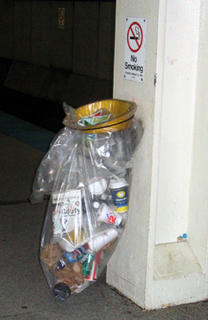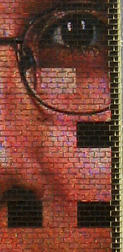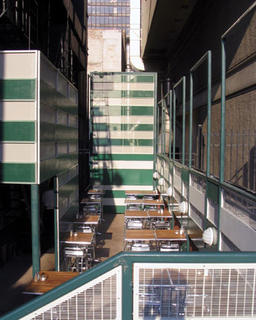Ray Nordstrand, former President of Chicago cultural icon WFMT, died Saturday morning after a long illness. He was 72. The way things are going, he may be the last visionary to come out of Chicago broadcasting.
Nordstrand was Daniel Burnham to program director Norm Pellegrini's John Wellborn Root. His artistic sensibility may have been somewhat less than his partner's (although his halting delivery, often affectionately parodied, had a style all its own), but it was coupled to a bedrock business sense. By tranforming the WFMT Program Guide into the highly profitable Chicago Magazine, he created the economic model that sustained what became one of the nation's great radio stations. What CFL or WLS were for rock, WFMT was for the fine arts.
When I began listening to WFMT, I knew nothing about classical music, and I considered opera highly suspect. Within a few years, its programs gave me an education no university could match: not just about classical music, but Broadway, folk, comedy and odds and ends through the Midnight Special, about art, through the critiques of Harry Bouras, about writing, through programs with Herman Kogan, of theater and elegant vitriol from Claudia Cassidy, and just everything else, including justice and fairness, through the interviews of Studs Terkel. WFMT had a set of ethics, an ambition for excellence, and, rare in anything but almost nonexistent in broadcasting, a soul.
Today, WFMT still retains remnants of its former greatness but, smothered by the bureaucratic embrace of Windows to the World, Inc., which also runs WTTW, it often appears on the road to becoming the fine arts version of JACK radio. Like so many sectors of the American economy, an elephantitis has set in where marketing rules, and what it's supposed to be supporting brings up the rear, far behind. WFMT began so lean it could be run, initially, by just two people, Bernard and Rita Jacobs. According to an account in the Chicago Tribune, they pawned their car and luggage to buy the station. With radio outlets changing hands for tens, or even hundreds of millions of dollars, who has that much stuff to hock today? If there's a young Ray Nordstrand somewhere out there now (please, God, speed them along) we'll probably find him or her in satellite radio, or on the internet.
This coming Monday, August 29th, beginning at 8:00 A.M, WFMT (98.7 FM) will broadcast a tribute to Ray Nordstrand, including reminiscences from many members of the FMT family. His death makes this a very sad day, but for forty years, he gave us a hell of a ride.

























